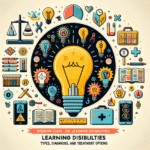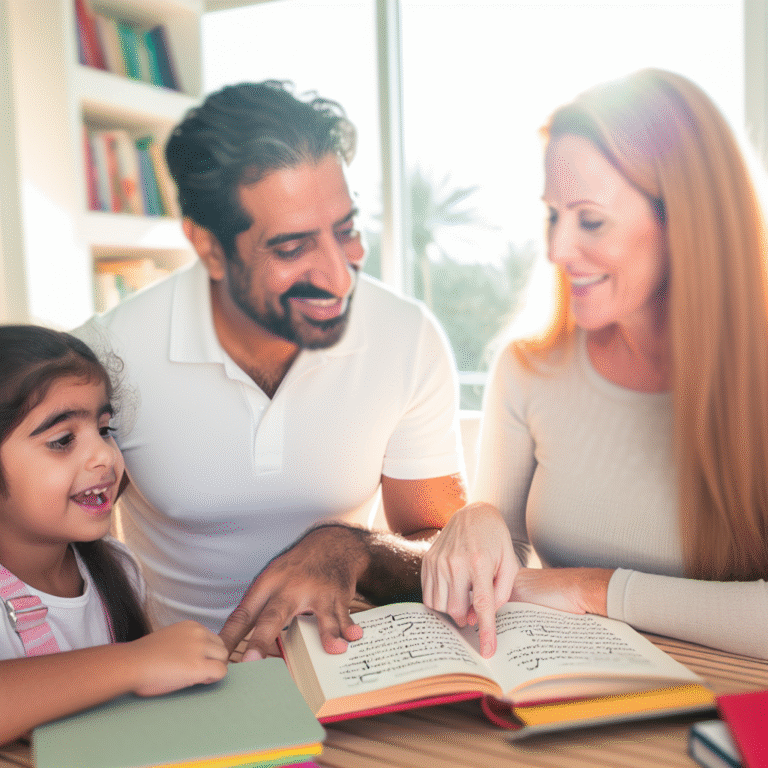
Empowering Every Learner: Essential Innovative Accommodations for Learning Disabilities in Education
Introduction
Imagine a classroom where every learner walks in fully equipped to thrive, regardless of the challenges they may face. Students with learning disabilities deserve an environment where they can unleash their potential, gain confidence, and transform their educational experience. The landscape of education is evolving, and educators, administrators, and policymakers are recognizing the importance of empowering every learner through innovative accommodations for learning disabilities. This article dives into powerful strategies and techniques that redefine what it means to support diverse learners, explore transformative case studies, and showcase the remarkable impact these accommodations can yield.
Understanding Learning Disabilities
Before we delve into innovative accommodations, it’s crucial to grasp what learning disabilities entail. Learning disabilities (LD) refer to a range of neurological conditions that affect the brain’s ability to process, understand, and retain information. This results in difficulties with reading (dyslexia), writing (dysgraphia), and mathematics (dyscalculia), among others.
According to the National Center for Learning Disabilities, approximately 1 in 5 children in the U.S. experiences learning disabilities, highlighting the necessity for educational systems to innovate and adapt.
The Importance of Innovative Accommodations
To effectively support students with learning disabilities, educators must adopt innovative accommodations that cater to individual needs while promoting inclusivity. Accommodations are not one-size-fits-all; they are adaptable strategies designed to provide learning support without changing the educational standards.
Differentiated Instruction: Tailoring teaching methods to suit diverse learning styles enhances engagement. This can include using visual aids, hands-on activities, and auditory materials. For instance, a teacher might incorporate multimedia presentations or interactive group work for students with dyslexia.
Flexible Assessment Methods: Rather than relying solely on traditional testing, educators can provide alternative assessment methods such as oral presentations, creative projects, or portfolios of student work. This approach not only reflects a student’s understanding but also reduces anxiety associated with standardized tests.
Assistive Technology: Tools like speech-to-text software, audiobooks, and specialized apps can significantly aid students with learning disabilities. These resources enable students to access information in ways that align with their strengths.
- Structured Routines and Clear Expectations: Creating a classroom environment with predictable schedules and clearly defined instructions helps students feel secure and fosters better learning.
Case Studies: Innovative Accommodations in Action
Case Study 1: Ellen’s Inclusive Classroom
Background: Ellen, a fifth-grade teacher, has a student named Jake, a bright boy with dyslexia. Frustrated by traditional reading methods, Jake struggled to keep up.
Innovative Accommodations: Ellen implemented a mix of differentiated instruction and assistive technology. She provided Jake with audiobooks and allowed him extra time for reading assignments. Additionally, she used graphic organizers to help him structure his thoughts during writing tasks.
Analysis: As a result, Jake showed marked improvement in his reading comprehension and writing skills. By adopting innovative accommodations, Ellen was not only able to enhance Jake’s learning experience but also created a more inclusive environment for her entire class.
Case Study 2: The Open-Door Policy at Lincoln High School
Background: Lincoln High School adopted an inclusive education model aimed at supporting students with learning disabilities.
Innovative Accommodations: The school established an open-door policy, allowing students to access special education resources during any class. They also provided teachers with professional development on identifying and implementing accommodations.
Analysis: This approach led to increased student participation and self-advocacy, empowering every learner. Teachers reported higher engagement levels and a notable increase in academic performance among students receiving support.
The Role of Collaboration
A significant aspect of empowering every learner through innovative accommodations involves collaboration among educators, parents, and specialists. Effective communication ensures that everyone stays informed about the student’s needs and progress.
Special Education Teachers: Collaborating with special educators ensures proper identification of accommodations and a focus on each learner’s unique profile.
Parental Support: Engaging parents in their child’s educational journey enables a holistic approach to learning, fostering a supportive home environment that complements school efforts.
- Peer Support: Creating buddy systems where peers help each other can reduce isolation and foster a sense of community within the classroom.
Data-Driven Approaches
Evidence-based practices are essential for validating the effectiveness of innovative accommodations. Data collection through assessments, surveys, and feedback allows educators to measure the success of accommodation strategies.
- Table 1: Effectiveness of Various Accommodations
| Accommodation Type | Percentage Improvement in Student Performance |
|---|---|
| Audiobooks | 30% |
| Extended Test Time | 25% |
| Graphic Organizers | 20% |
| Peer Tutoring | 15% |
Using data, schools can modify their approaches dynamically, ensuring that every learner feels empowered to succeed.
Social-Emotional Learning (SEL) and Its Connection
Empowering every learner extends beyond academics. Social-emotional learning (SEL) plays a critical role in supporting students with learning disabilities. SEL programs that foster resilience, emotional regulation, and interpersonal skills can create a secure environment where all students thrive.
SEL Strategies for Support
Building a Positive Classroom Culture: Teachers can foster a sense of belonging, creating a supportive community where students can express their feelings without fear of judgment.
Mindfulness Practices: Incorporating mindfulness techniques helps students manage stress, anxiety, and contributes to overall well-being.
- Communication Skills: Teaching students how to communicate their needs and advocate for themselves fosters confidence and empowerment.
Funding and Resources for Innovative Accommodations
Schools must explore various funding options to implement innovative accommodations effectively. Grants from educational foundations, state funding programs, and partnerships with local businesses can help offset costs.
Resource Table 2: Funding Opportunities for Schools
| Source of Funding | Description |
|---|---|
| IDEA Grants | Federal funds to support students with disabilities |
| State Education Agencies | State-level grants aimed at inclusive education initiatives |
| Nonprofit Organizations | Many nonprofits offer resources for schools supporting special education |
By leveraging these resources, educational institutions can provide the necessary accommodations without overburdening their budgets.
Conclusion
The journey of empowering every learner through innovative accommodations for learning disabilities in education is ongoing and requires commitment from all stakeholders. By actively implementing effective strategies, collaborating closely with parents and specialists, and prioritizing social-emotional learning, we can shift the educational paradigm.
Educators hold the key to fostering an inclusive environment where every learner feels valued and empowered. Together, we can redefine success in education — one innovative accommodation at a time.
FAQs
1. What are the most common learning disabilities?
Common learning disabilities include dyslexia (reading difficulties), dysgraphia (writing difficulties), dyscalculia (math difficulties), and nonverbal learning disabilities.
2. How can teachers implement accommodations in the classroom?
Teachers can implement accommodations by using differentiated instruction strategies, providing flexible assessment methods, integrating assistive technology, and creating structured routines.
3. Are accommodations different from modifications?
Yes, accommodations provide support to help students meet learning benchmarks, while modifications change the learning expectations themselves.
4. How can parents support their children with learning disabilities?
Parents can support their children by collaborating with educators, encouraging self-advocacy skills, and providing a structured, supportive learning environment at home.
5. What role does assistive technology play in education?
Assistive technology aids students with learning disabilities by providing tools that facilitate learning, such as text-to-speech software, audiobooks, and specialized apps that cater to individual needs.
6. How do schools obtain funding for innovative accommodations?
Schools can obtain funding through federal IDEA grants, state education agencies, and grants from nonprofit organizations that focus on special education initiatives.
By prioritizing inclusivity and employing innovative strategies, we can ensure that every learner’s unique strengths are recognized and nurtured, leading to a more equitable educational landscape.









